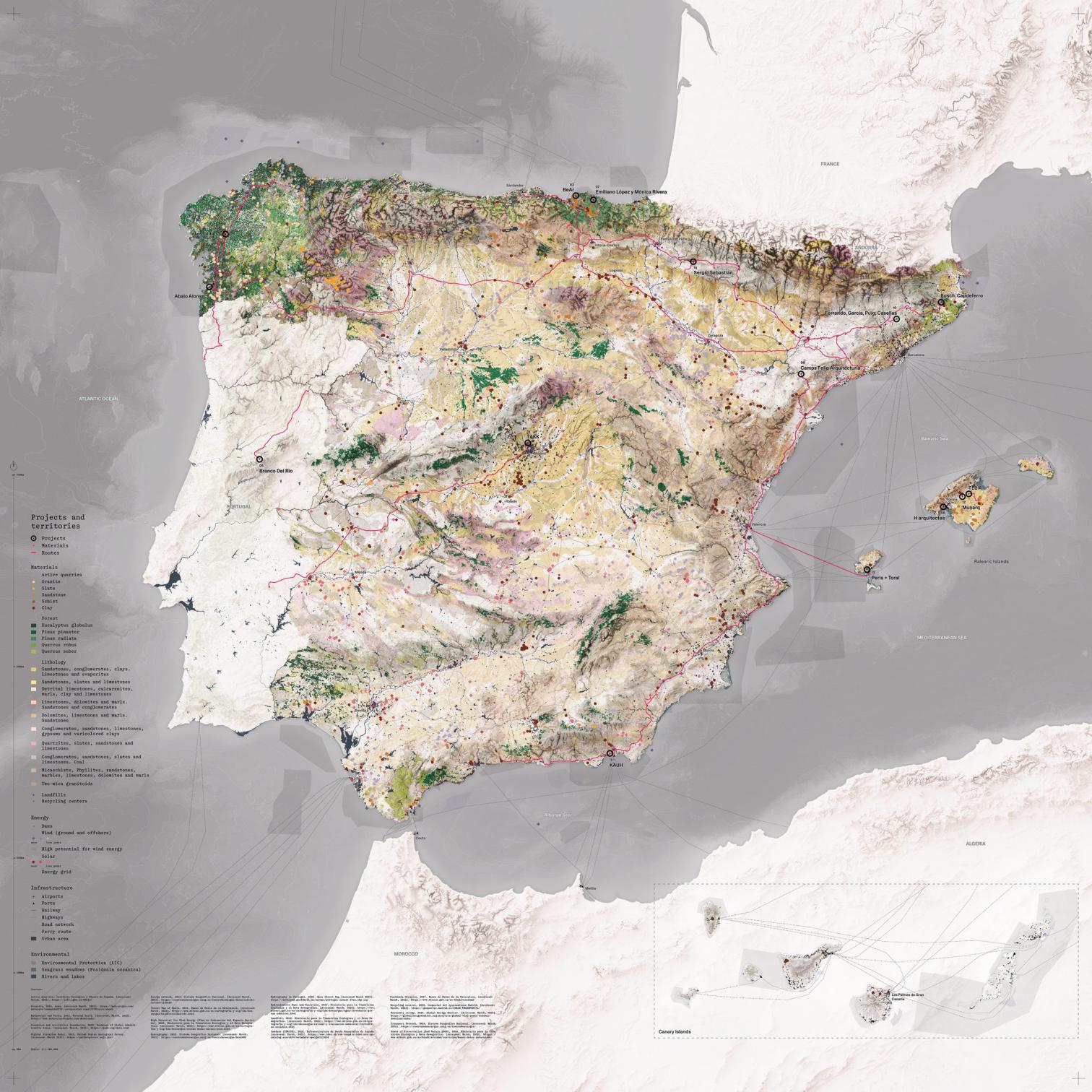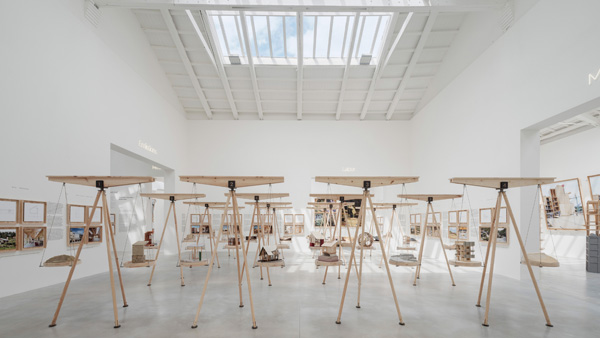
If there is an urban model that nowadays shows clear symptoms of collapse, that’s Venice. The floating city has been sinking for decades under the weight of its own success, completely denatured and at the mercy of speculative policies. The ever more frequent acque alte and the constant masses of tourists show that disproportionate infrastructures built to keep them at bay and the symbolic fees slapped on tourists are but futile attempts to prolong the life of the goose that lays golden eggs. Yet artists and architects insist on rethinking the world’s workings by taking turns, year after year, holding an event that involves transporting tons of merchandise and thousands of additional professionals to the lagoon. To top it all, this year the paradox is exacerbated, and the wrong they seek to right is precisely the impact of climate change and demographic evolution.
Without succumbing to patriotic pride, if the Giardini features a proposal that seems aware of the contradictions of this exhibition model, and in general of the profession’s everyday, it is the one by Roi Salgueiro and Manuel Bouzas for the Spanish Pavilion. The two curators have focused their gaze on architecture’s capacity to generate territorial balances and, not content with such an abstract starting point, they have coined a new word with which to explain it: ‘internality.’ True, it may sound like yet another one of those discourses by inveterate go-gooders, who, waving the banner of ecology or sustainability, base them upon principles hard to quantify, and who in the end reach results much removed from the avant-garde. Nevertheless, here the neologism seems almost pertinent, because they have put together a well articulated narrative around a transcendental question: if nature does not produce wastes, and if all materials take part in a continuous cycle, shouldn’t architecture try to minimize the consequences of its production?
To explain their thesis better, and above all to make the new concept more intelligible, they rely on the contrast with the idea of externality, a frequent term in the economics world that refers to the collateral effects on those not directly involved in an activity. In a nutshell, we must wake up to the fact that we inhabit a fabricated world in which the building sector is an essential players in the climate crisis, responsible for 37% of global emissions of carbon dioxide, and thus one of the principal generators of ‘externalities.’ The study is in five axes along which to balance the scales: aspects as fundamental as energy, materials, crafts, wastes, and emissions. Each of these explorations was assigned to a duo comprising an architect and a photographer, who together struck up a stimulating dialogue between the objects of one and the images of the other.
Nonetheless, without a doubt the pavilion’s strong point is its central hall, and it becomes clear that in Spain – especially in some parts of it – there is a generation of architects who have for quite a while now been working out a building model that is more responsible in its engagement with the environment, who look around them before proposing anything, and who primarily use resources – natural or technical – available close by. The balance between the architectures and the territory of these ‘internalized’ practices is evidenced in the exhibition set-up: balances compensated by two models of the same project, one showing the materials and processes used, and the other the territorial scale that represents its origin. The selection of works includes small renovations and social developments, private houses and public parks, constructions executed with marés stone and wood. What’s demonstrated here is that these links are independent of scales, clients, and materials, and that with determination, architecture can be an active part of a change of climate for the better.
Another good thing about the pavilion is what it will leave behind: just a handful of Balearic seaweeds, the three Galician pines used as supports, and a map connecting major infrastructures and sources of materials to the projects on display and their authors. Hopefully these debates will soon lead to biennials devoid of externalities, and in equilibrium with the territories where they are held.
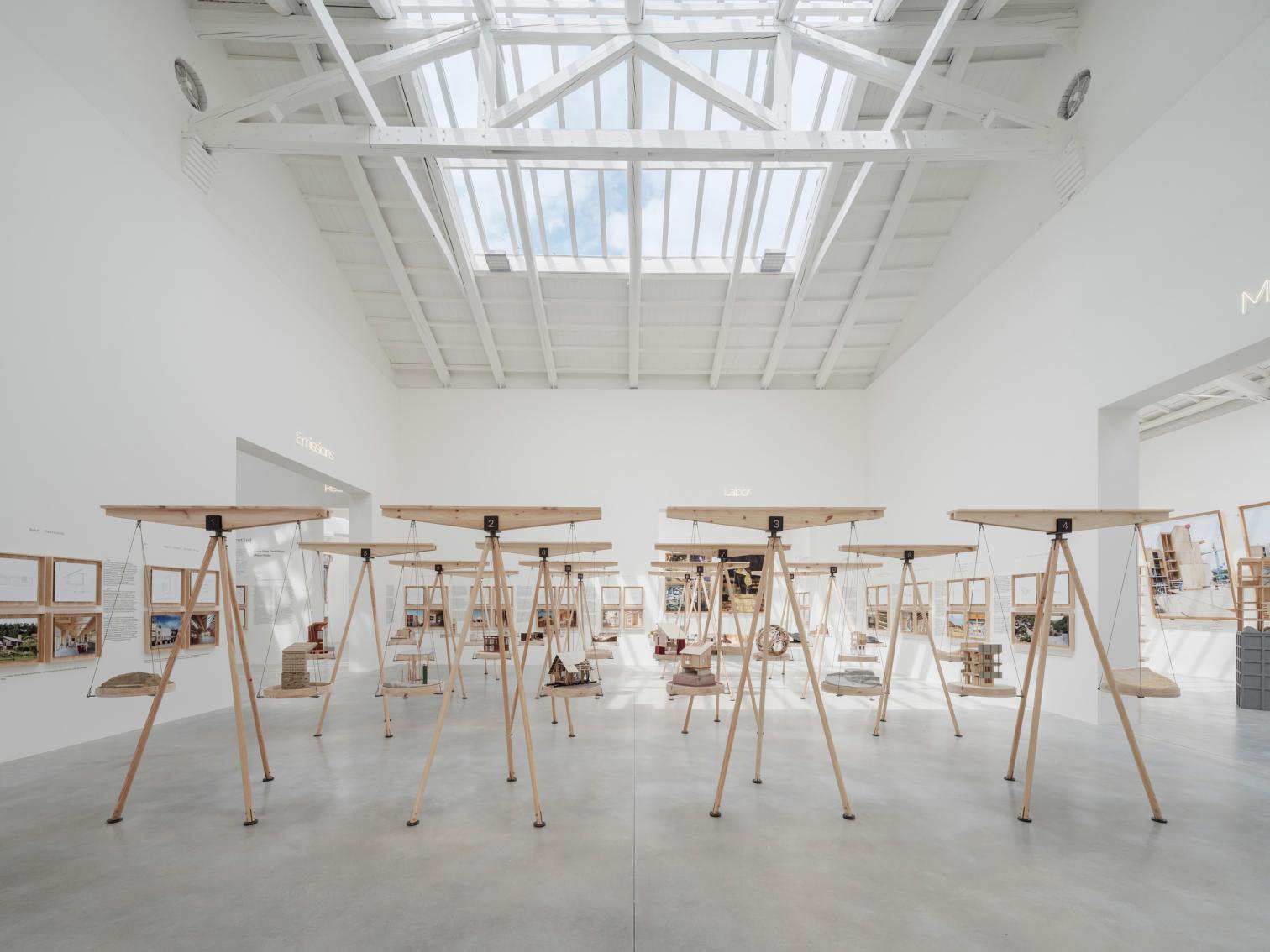

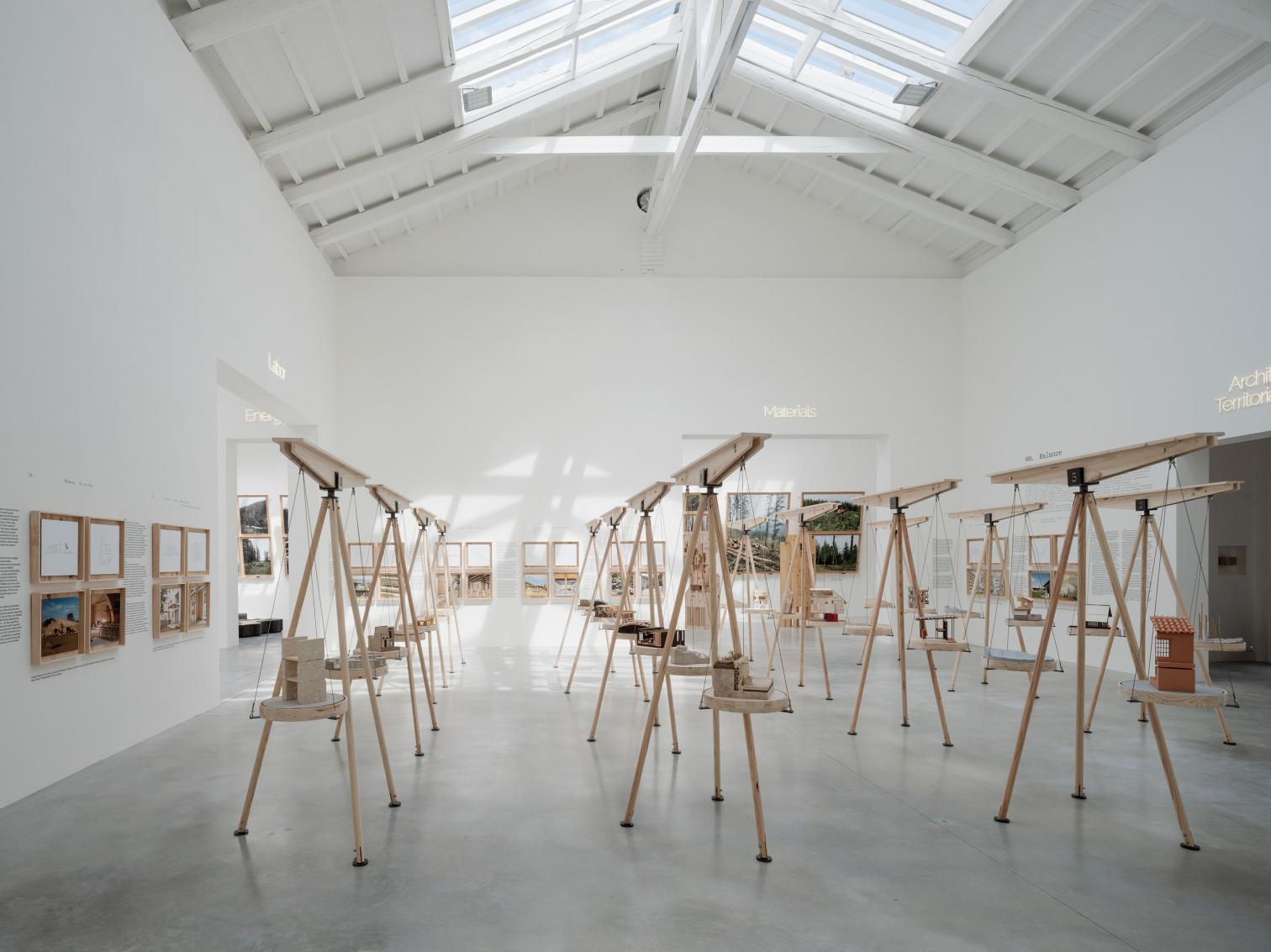

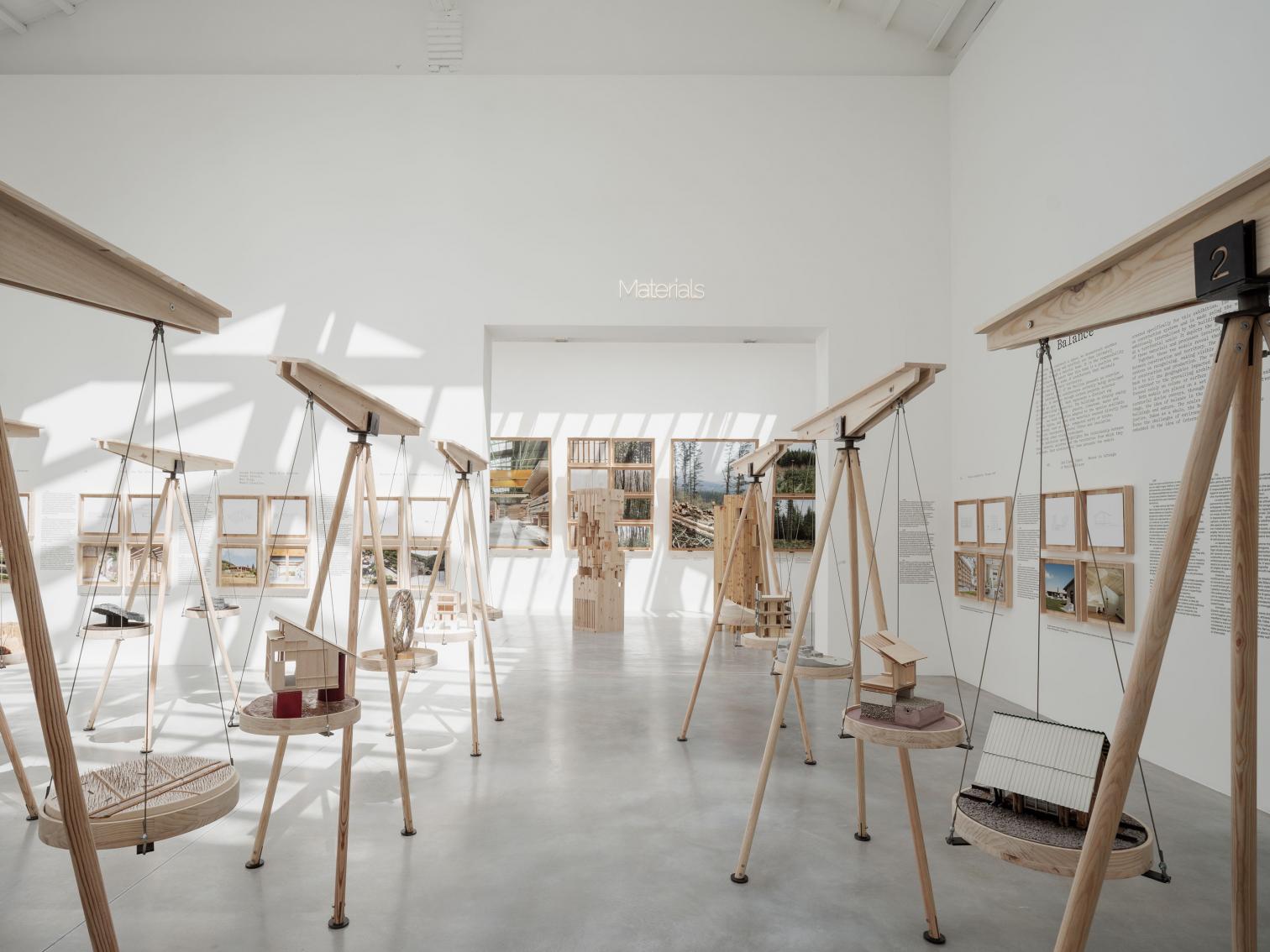
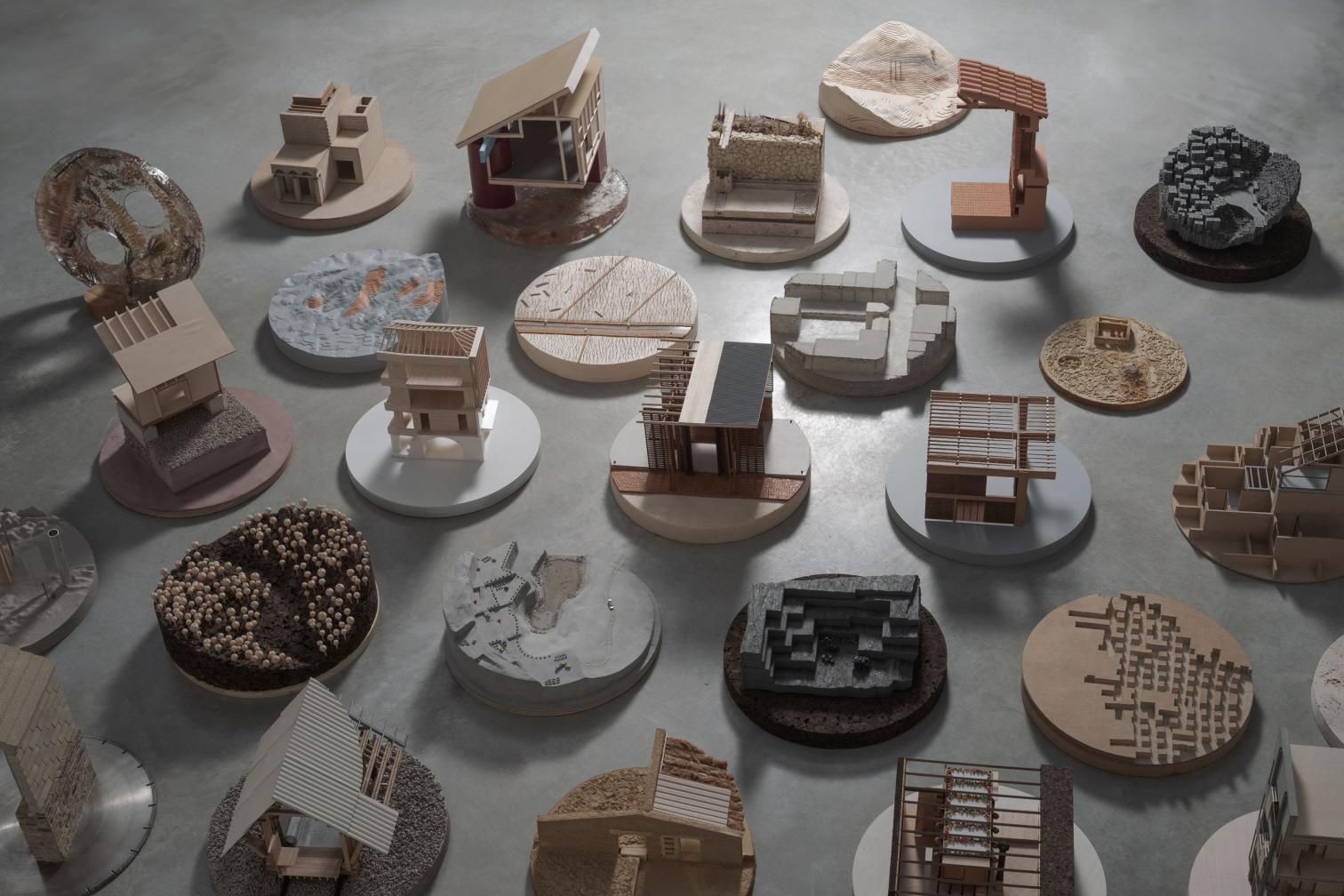
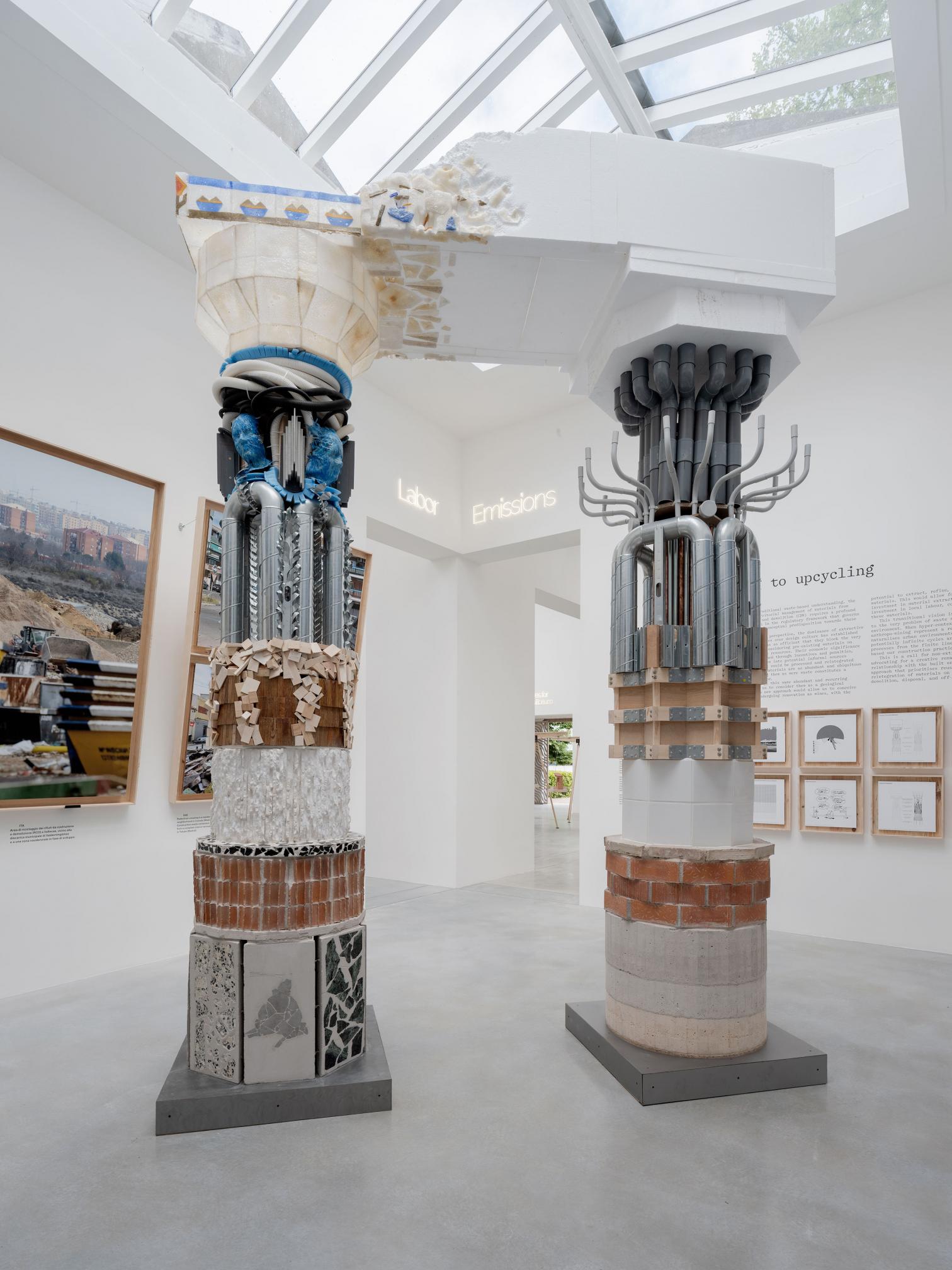
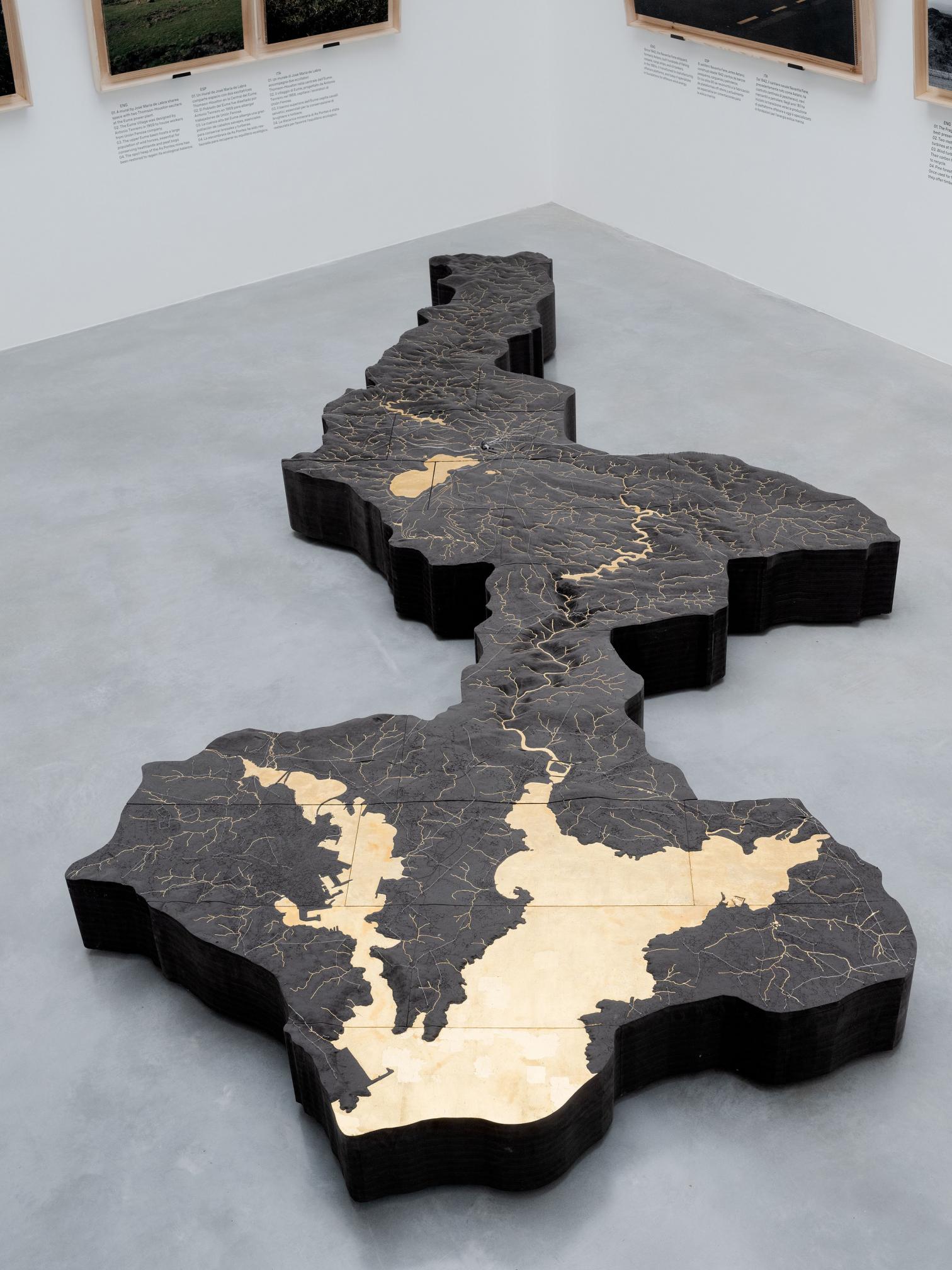
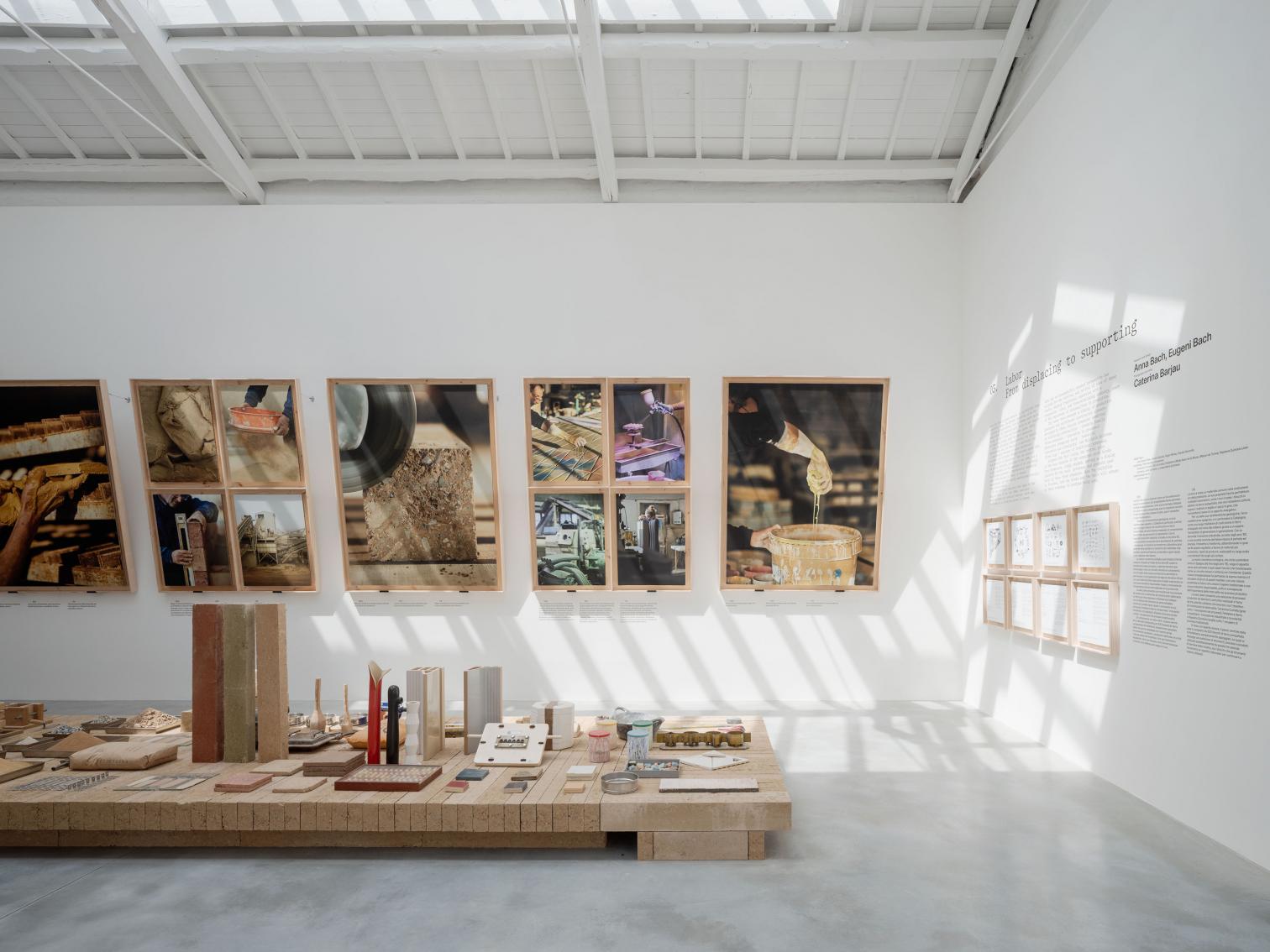
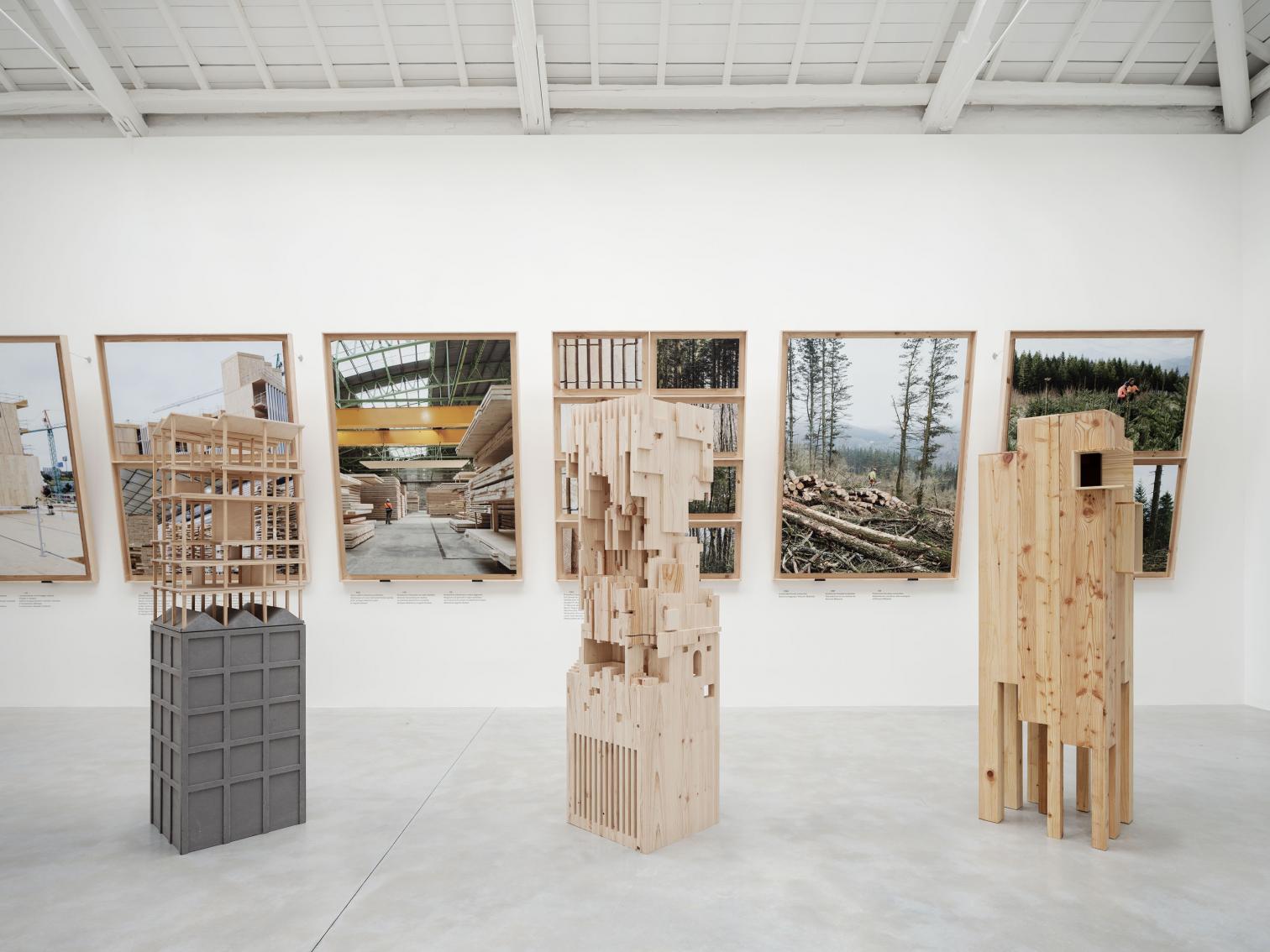

De izquierda a derecha: Roi Salgueiro y Manuel Bouzas
